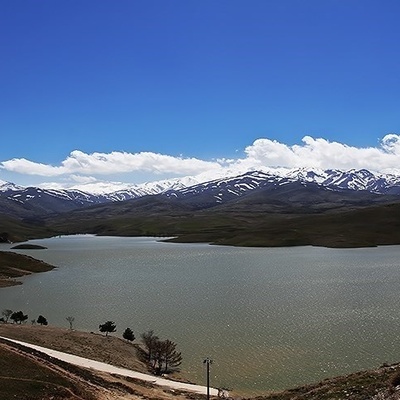SAEDNEWS: Dalekhani Forest, nestled in the southeastern highlands of Ramsar in Mazandaran Province, offers travelers an extraordinary escape into one of Iran’s most pristine and spellbinding natural landscapes.

In this scenic journey, Karnaval travels to the bride of northern Iranian cities—Ramsar—to guide you through the mesmerizing Dalekhani Forest. This pristine and magical natural haven offers one of the most memorable trips of your life and immerses you in untamed beauty. Join us as we explore Dalekhani Forest from all angles—its attractions, ambiance, accommodations, and travel tips.


It is among the most famous attractions in Ramsar.
One of the most pristine and stunning forest routes in northern Iran.
A beloved destination for forest trekking enthusiasts.
Leads to several picturesque villages and summer pastures at its end, adding color and culture to your journey.



Dalekhani Forest is one of the most beautiful forests in Iran, located about 30 kilometers southeast of Ramsar. Nestled in the highlands of the Alborz mountain range along the scenic Jenat Rudbar road, this semi-mountainous forest sits at an altitude of 800 meters above sea level and spans 600,000 square meters. With its thick woodland cover and frequent thick mists, the forest is a “heavenly corridor” leading you toward the stunning pastures of Akrasar, Garsmasar, and Jenat Rudbar.
Many natural wonders and recreational experiences await in Dalekhani Forest. Here are some of the highlights:
Dalekhani is like a dreamy path, pulling you out of everyday life into the misty, untouched embrace of northern Iran’s nature. Much of the trail is wrapped in a white silk of fog, while the winding road conjures images of paradise. This lush green corridor of towering trees envelops you in majestic beauty, with each turn revealing fresh facets of untouched nature. The journey seduces visitors to continue to the very end.



One of the most tempting aspects of Dalekhani is its unparalleled photography opportunities. Every season brings new charm to capture. For those who love open-air picnics, this place is also a perfect pick. Since much of the forest is dense and lacks open meadows, it's best to picnic in the wooden cottages or gazebos scattered along the trail.


Beyond the stunning natural sights, Dalekhani offers delightful local treats. You’ll find trout farms, fresh honey, and seasonal fruits—perfect as souvenirs. Roadside wooden stalls often serve fragrant local tea, hot traditional soups, and rich, flavorful northern Iranian dishes to warm your journey.



Forest trekking and mountain hiking are among the most popular activities in Dalekhani. Numerous guided tours operate here, offering a variety of routes depending on your guide’s expertise. However, do not attempt to explore the forest without prior experience, a knowledgeable guide, and the proper equipment.


On June 5, 1982, the serene forest echoed with gunfire. A Land Rover carrying eight Basij volunteers was ambushed by a terrorist group, killing seven of them. A memorial now stands at the site—locally known as the Curve of Seven Martyrs—where many visitors stop to pay their respects.

At the far end of Dalekhani Forest, wide, green plains open up to reveal several of Ramsar’s most beautiful villages:
Garsmasar is the first village you reach. Located at a high elevation, it's used as a summer retreat by residents of nearby Ramsar. With its crisp mountain air, vast plains, towering peaks, and clear springs, Garsmasar is ideal for both rest and exploration. The nearby Samarmaz Peak, the highest mountain in Ramsar, makes this a popular route for climbers.
This beloved summer retreat is famed for its borage flower fields, earning it the nickname “Iran’s Borage Capital.” The village harvests around 40 tons of this medicinal herb annually. With its alpine climate, lush forest cover, captivating waterfalls, and dense mist, Jenat Rudbar enchants visitors throughout the year.


At the start of the Dalekhani forest road, a right turn at the Shasta junction leads to Mijran Dam—one of Iran’s most beautiful yet lesser-known reservoirs. Though the road is steep and winding, the reward is a turquoise lake surrounded by thick forest. Follow the downhill path to the water’s edge and enjoy a relaxing stroll beside the lake.


Lodging is available at the beginning of the forest trail and in the villages of Garsmasar and Jenat Rudbar. There are also several forest cottages along the way. In nearby Ramsar and Tonekabon, visitors can find villas, guesthouses, and hotels. Due to nighttime cold and the presence of wild animals and insects, camping in the forest is not advised—especially for families.
Facilities: Various cottages, stalls, and roadside restaurants are available for meals and picnic stops.



Ramsar is a year-round destination, and Dalekhani Forest is no exception. Each season brings unique charm:
Spring: Budding greenery, gentle mist, light rain, and delicate blossoms.
Summer: A cool escape from Ramsar’s humidity.
Autumn: A colorful, yet chilly landscape with slippery roads due to rain.
Winter: A snowy wonderland, dazzling in its serene white beauty.




Address: Mazandaran Province, 30 km southeast of Ramsar city, Jenat Rudbar rural road, Dalekhani Forest.
From Ramsar, drive east until you reach the Jenat Rudbar junction. Turn right and continue onward—the forest gradually unfolds before you. Be aware that the route is mostly uphill, so ensure your vehicle is in good condition before starting.


While in Ramsar, you can also visit:
Markuh Castle: approx. 16 km away
Ramsar Cable Car: approx. 40 km away
Casino Boulevard: approx. 27 km away
Historic Hotels (New & Old): approx. 28 km away

Local plant species in Dalekhani Forest include juniper trees (both highland and lowland), wild medlar, barberry, chestnut, hazelnut, blackberry, yew, hawthorn, and more.

If you plan to explore Dalekhani Forest, make sure to book your accommodation and arrange a local guide in advance. Check the weather before traveling to avoid surprise showers.
The forest is clean and well-maintained, with numerous trash bins along the trail. Please do your part by collecting and disposing of your litter properly. The city takes great care in preserving this natural treasure.



